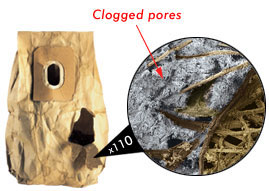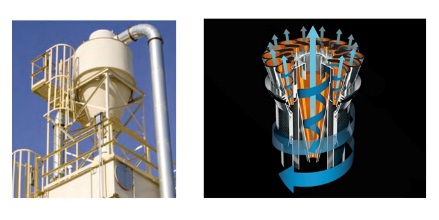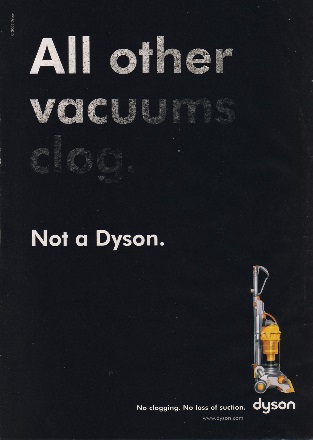Innovation Requires Focus on Similarities Not Differences
When striving for innovation, it’s important to be selective as to how you look at the problems or potential choices in front of you. It is by identifying the unseen elements in these criteria that unique solutions are found. When seeking distinction, you need to move beyond the obvious answer, and dig a little deeper.
Most people have an easier time identifying the differences between unrelated objects than their similarities. This is because it takes less effort for our minds to notice contrasts than it does commonalities. When asked to compare a saw mill with a vacuum cleaner, for example, most people could respond quickly and provide a long list of differences. When asked to find similarities between a saw mill and vacuum cleaner, their responses take longer and their lists are shorter.
The more effort you put into finding the resemblance between things, the easier they are to see. One way to do this is through analogies. Using analogies helps bridge the commonalities between unrelated objects when you compare different parts and characteristics, potential applications, and the essence of their purpose – their “job” or what they actually do. Sometimes the commonalities are small, but clearly visible. Other times, they are subtle, yet logical when thought about.
Take a cyclonic separator at a local sawmill as an example. It uses centrifugal force to suck sawdust from the air. When James Dyson saw this he began asking questions. Upon investigation, he learned that saw mills shared a similar problem as a vacuum cleaner. This connection between shared problem and an existing solution became the foundational principle to his unique vacuum cleaner.
To innovate a solution, he followed a three step process, which you could also use any time you are looking for creative, breakthrough ideas. 1. Define the problem and trace its root cause. 2. Driven by analogical thinking, investigate across domains where a similar problem and solution exists. 3. Transform the solution to apply to your specific situation.
1. Define the problem and trace its root cause.
The starting point to any solution is determined by the way its problem is defined. The way we word the problem statement could point us in the right direction, or amiss. The key to solving problems is the way you think of it, because it indicates where to investigate a solution.
 Dyson started with a problem, which resulted in a solution that transformed the industry. He
Dyson started with a problem, which resulted in a solution that transformed the industry. He
noticed that his Hoover clogged quickly then lost suction. When opening the bag to investigate, he noticed a layer of dust inside, clogging the fine material mesh and preventing the machine working properly. The vacuum only worked well with a fresh bag but lost suction over time.
He realized that the answer wasn’t better filtration, which was what everyone else was working on, but instead, the effective separation of dust and air. Dyson realized filtration represented a tradeoff (efficient filters clogged), which gave him reason to reframe the problem at a slightly higher level of abstraction. The inclination to look for solutions within the same domain as the problem results in predictable and common outcomes. This is the place most people start, but it is not where the most successful people end. Once you learn how to properly define and frame a problem, it becomes part of your natural tendencies to generate innovative ideas for your business.
2. Driven by analogical thinking, investigate across domains where a similar problem and solution exists.
 During Dyson’s visit to the sawmill, he noticed how sawdust was removed from the air by a 30-foot high industrial cyclone that spun dust out of the air by centrifugal force—to expel waste. Dyson learned that centripetal separators are a typical method of collecting dirt, dust and debris in industrial settings. When he applied the analogy between vacuum cleaners and air filtration in a saw mill, he hypothesized the same principle might work, on a smaller scale, in a vacuum cleaner.
During Dyson’s visit to the sawmill, he noticed how sawdust was removed from the air by a 30-foot high industrial cyclone that spun dust out of the air by centrifugal force—to expel waste. Dyson learned that centripetal separators are a typical method of collecting dirt, dust and debris in industrial settings. When he applied the analogy between vacuum cleaners and air filtration in a saw mill, he hypothesized the same principle might work, on a smaller scale, in a vacuum cleaner.
Source: Art Markman, Smart Thinking. Perigee.
Analogies can provide invaluable creative insights and simplify new, complex problems in terms of familiar ones. They can trigger breakthrough ideas which often result from transferring problem solutions from one industry or domain to another.
3. Transform the solution and apply to your specific situation.
 Dyson realized that the way cyclonic separation removed sawdust from the air in a saw-mill could be reapplied. This train of thought allowed him to connect the saw-mill and vacuum cleaner, and ultimately deliver the Dyson Vac. He reasoned that a vacuum cleaner that could separate dust by cyclonic action and spin it out of the airstream would eliminate the need for both bag and filter.
Dyson realized that the way cyclonic separation removed sawdust from the air in a saw-mill could be reapplied. This train of thought allowed him to connect the saw-mill and vacuum cleaner, and ultimately deliver the Dyson Vac. He reasoned that a vacuum cleaner that could separate dust by cyclonic action and spin it out of the airstream would eliminate the need for both bag and filter.
Source: Wikipedia
Dyson didn’t invent cyclone particle separation, but he was the first to put it into a vacuum cleaner. The Dual Cyclon™ vacuum cleaner, which has cyclonic separation principles, allows them to function without a bag and stops the clogging issue.
What Dyson ultimately accomplished is amazing, but the impetus that sparked his innovation is similar to what triggers all of our explorations for a solution – a problem, a need, an unresolved issue and an unarticulated but visible hole. The path he took to solve his challenge was unconventional, but the reason he even started down this path is shared by everyone in search of an answer.
To consistently find fresh and creative solutions practice looking for common characteristics, attributes, and elements across disparate domains. Radical innovations are spawned by the interplay of different ideas and domains that don’t usually belong together, through connectivity and conversation.
Source: Innovation to the Core.
